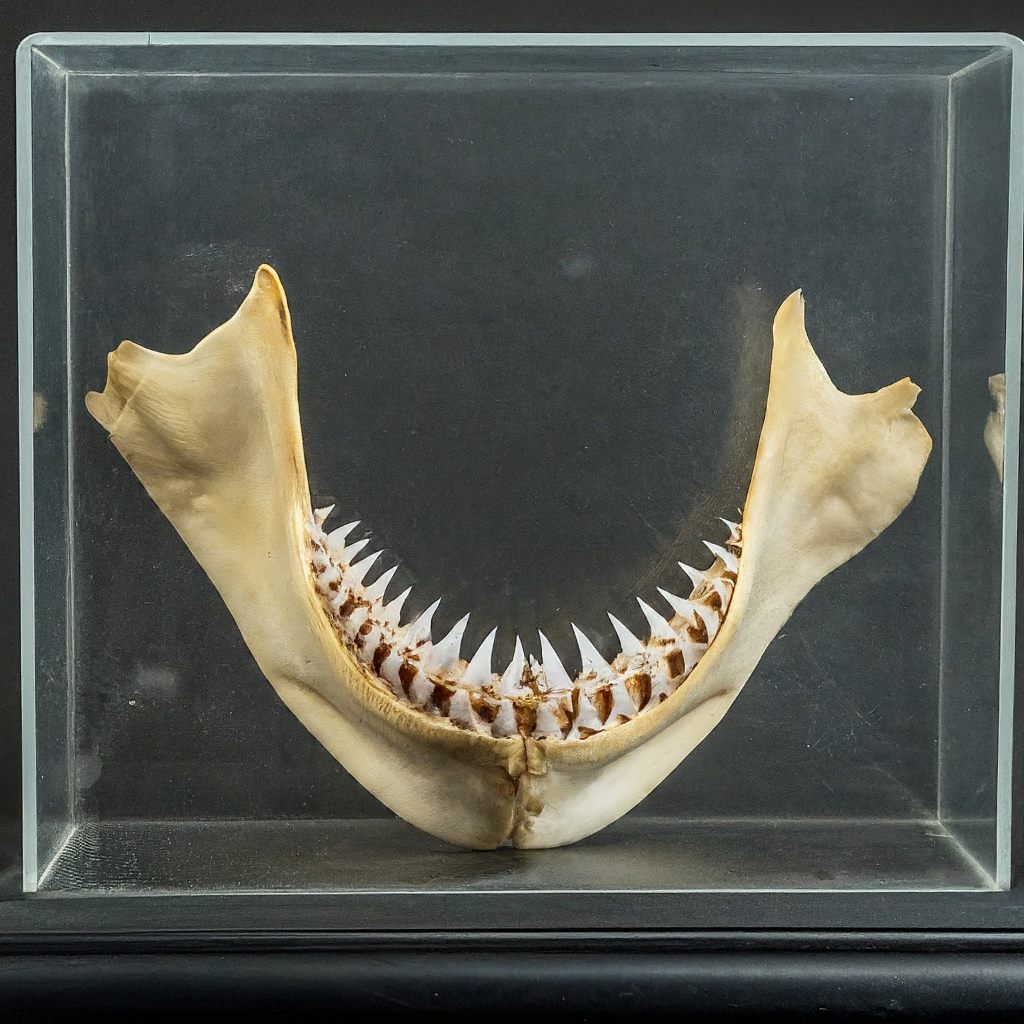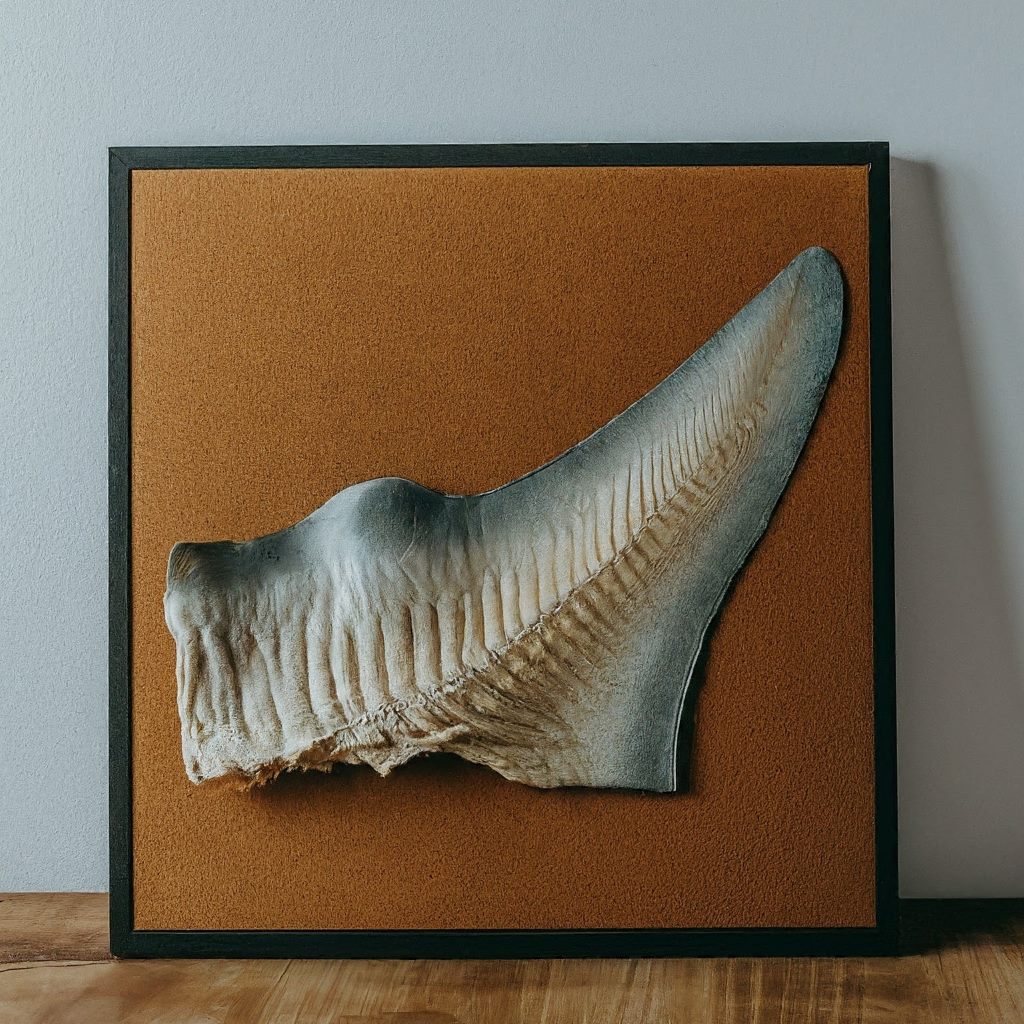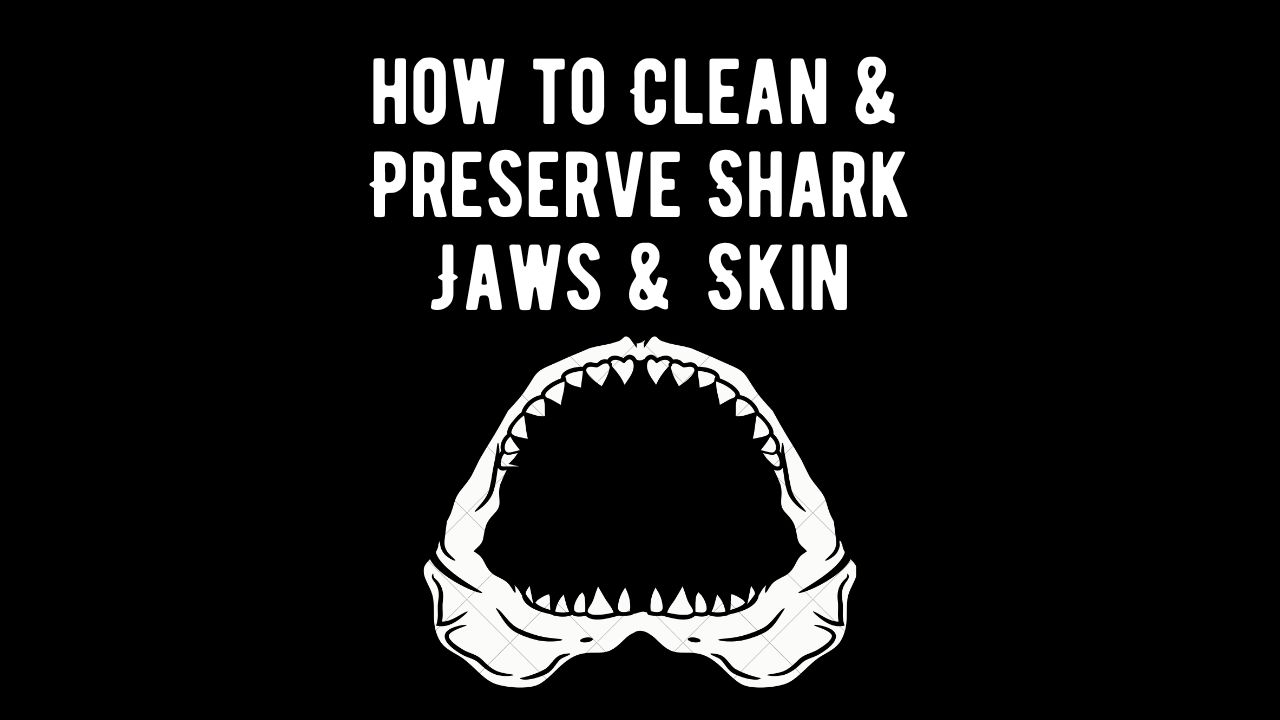Shark jaws and skin are fascinating artifacts that enthusiasts often seek to preserve for educational or decorative purposes. Whether you’ve come across a shark jaw during a beach-combing adventure or you’re a collector looking to maintain your prized specimen, proper cleaning and preservation are essential. This guide provides step-by-step instructions to help you preserve the integrity and aesthetics of shark jaws and skin.
Cleaning Shark Jaws:
Materials Needed:
- Protective Gear:
- Gloves and safety goggles to ensure personal safety during the cleaning process.
- Brushes:
- Soft brushes (toothbrushes or paintbrushes) for removing debris and loose particles.
- Dish Soap:
- Mild dish soap for initial cleaning. Avoid harsh chemicals that may damage the jaw.
- Water Basin:
- A basin or bucket for cleaning and rinsing the shark jaw.
Steps:
- Safety First:
- Put on gloves and safety goggles to protect your hands and eyes.
- Remove Loose Debris:
- Gently brush away any loose particles or debris from the shark jaw using a soft brush.
- Prepare Soapy Water:
- Fill a basin with lukewarm water and add a small amount of mild dish soap.
- Soak and Clean:
- Submerge the shark jaw in the soapy water and gently scrub it with a soft brush to remove dirt and grime. Pay attention to hard-to-reach areas.
- Rinse Thoroughly:
- Rinse the shark jaw thoroughly under running water to remove soap residue.
- Air Dry:
- Allow the shark jaw to air dry completely. Avoid direct sunlight, as prolonged exposure can lead to discoloration.
- Optional: Whitening (for white shark jaws):
- If you have a white shark jaw and wish to enhance its color, you can use a hydrogen peroxide solution. Dilute hydrogen peroxide with water and gently apply it to the jaw. Monitor the process closely to avoid over-whitening.

Preserving Shark Jaws:
Materials Needed:
- Clear Sealant or Varnish:
- A clear sealant or varnish suitable for bones, such as a polyurethane spray.
- Soft Cloth:
- A soft cloth for applying the sealant.
Steps:
- Ensure Complete Dryness:
- Ensure that the shark jaw is thoroughly dry before applying any sealant.
- Choose a Sealant:
- Select a clear sealant or varnish that is bone-friendly. Polyurethane sprays designed for bones or taxidermy work well.
- Ventilation:
- Work in a well-ventilated area or outdoors when applying the sealant to avoid inhaling fumes.
- Apply Sealant:
- Spray or brush a thin, even layer of the sealant onto the shark jaw. Ensure all surfaces are covered.
- Let it Dry:
- Allow the sealant to dry completely according to the product’s instructions. This may take several hours.
- Inspect and Repeat (Optional):
- Inspect the shark jaw after drying. If needed, apply an additional coat for enhanced protection.

Cleaning Shark Skin:
Materials Needed:
- Protective Gear:
- Gloves and safety goggles.
- Soft Brushes:
- Soft brushes for removing debris. Avoid stiff brushes that may damage the skin.
- Mild Detergent:
- A mild detergent or soap suitable for delicate materials.
- Water Basin:
- A basin for cleaning and rinsing.
Steps:
- Safety Gear:
- Put on gloves and safety goggles.
- Remove Loose Debris:
- Gently brush away loose debris from the shark skin using soft brushes.
- Prepare Soapy Water:
- Fill a basin with lukewarm water and add a small amount of mild detergent.
- Clean Gently:
- Submerge the shark skin in the soapy water and gently clean it with a soft brush. Avoid vigorous scrubbing to prevent damage.
- Rinse Thoroughly:
- Rinse the shark skin thoroughly under running water to remove soap residue.
- Air Dry:
- Allow the shark skin to air dry completely. Avoid direct sunlight and heat.
- Moisturize (Optional):
- For dried or brittle shark skin, you can apply a small amount of leather conditioner or moisturizer to keep it supple. Test in a small, inconspicuous area first.
- Avoid Harsh Chemicals:
- Avoid using harsh chemicals, bleach, or strong detergents, as they can damage the natural oils in the skin.
By following these steps, you can clean and preserve shark jaws and skin effectively, maintaining their integrity and enhancing their visual appeal. Whether you’re a collector, educator, or nature enthusiast, these methods ensure that your shark specimens remain valuable and well-preserved for years to come.
(FAQs) about Shark Jaws and Skin Preservation
Q1: How often should I clean and preserve my shark jaw or skin?
A: The frequency of cleaning and preservation depends on factors such as environmental conditions, display location, and the specimen’s exposure to dust or humidity. In general, it’s advisable to inspect and perform maintenance annually or as needed.
Q2: Can I use household cleaning products on shark jaws and skin?
A: It is recommended to avoid harsh household cleaning products, as they may contain chemicals that can damage the bone or skin. Stick to mild dish soap for cleaning and bone-friendly sealants for preservation.
Q3: What should I do if my shark jaw starts yellowing?
A: Yellowing may occur due to natural aging or environmental factors. To address yellowing, you can try gently cleaning the jaw with a mild detergent and water. If the color doesn’t improve, consult with experts in bone preservation for guidance.
Q4: Is there a specific method for cleaning and preserving teeth within the shark jaw?
A: Teeth within the shark jaw can be cleaned using the same method as the jaw itself. For preservation, ensure that the sealant or varnish used is applied evenly, covering both the jaw and individual teeth.
Q5: Can I display my preserved shark jaw or skin in direct sunlight?
A: Prolonged exposure to direct sunlight can lead to discoloration and deterioration. It’s advisable to display your shark specimens in a well-lit area with indirect sunlight to avoid potential damage.
Q6: How can I remove an unpleasant odor from a shark jaw?
A: If your shark jaw develops an unpleasant odor, you can place it in a well-ventilated area to air out. Avoid using strong deodorizers or chemicals, as they may adversely affect the preservation.
Q7: Can I preserve a shark jaw found in the wild?
A: Preserving a shark jaw found in the wild follows a similar process as cleaning and preserving a purchased specimen. Ensure thorough cleaning and use bone-friendly sealants for preservation.
Q8: Are there any regulations or permits required for preserving shark jaws or skin?
A: Depending on your location, there may be regulations regarding the collection and preservation of certain shark species. Check local wildlife conservation laws and obtain any necessary permits before preserving shark specimens.
